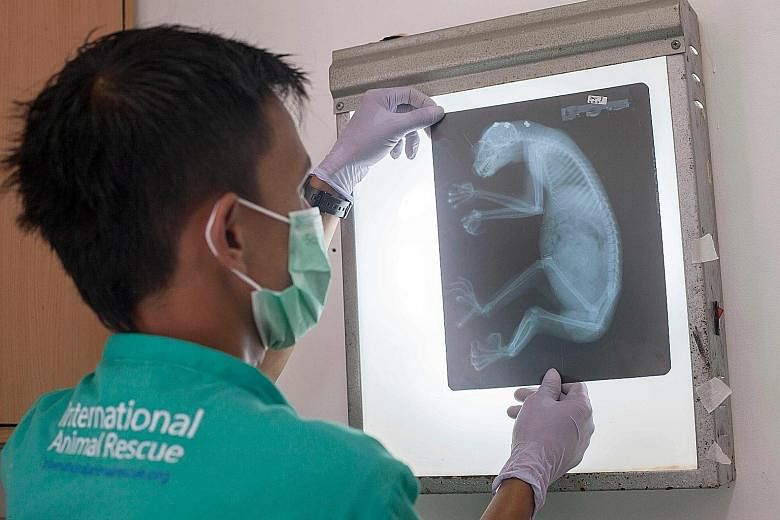JAKARTA • From cutting-edge DNA barcoding to smartphone apps that can identify illegal wildlife sales, conservationists are turning to high-tech tools in the battle against Indonesia's animal traffickers.
Spread across more than 17,000 islands, Indonesia's dense tropical rainforests boast some of the highest levels of biodiversity.
But that enormous array of flora and fauna means Indonesia is also on the front line of an illicit global trade estimated to be worth as much as US$23 billion (S$30 billion) a year - a shadowy operation driving some species to the brink of extinction.
"The criminals that are behind the illegal wildlife trade are large organised syndicates that are extremely sophisticated," said Mr Matthew Pritchett of anti-trafficking group Freeland Foundation.
To keep pace with these trafficking groups, activists are deploying the kind of technology once reserved for combating drug cartels and crime lords. For instance, the Wildlife Conservation Society, which works with Indonesian authorities to halt wildlife crime, uses similar computer software to map criminal networks and extract data from seized electronic devices.
Conservation group International Animal Rescue Indonesia (IAR) is examining crime scene evidence with the help of DNA barcoding. Tissue samples from confiscated animals can be cross-referenced with a database of stored genetic codes, helping to differentiate between species and sub-species - not all of which may be endangered.
IAR is building a barcode database for different species of slow loris, a cute but venomous primate being hunted to extinction for use in traditional Chinese medicine.
"If we have animals with a known origin and we have animals that appear, for example, in Jakarta, we can then compare the genetic samples," Ms Christine Rattel, IAR programme adviser, said. "We can then track down the hunting hot spots."
AGENCE FRANCE-PRESSE

